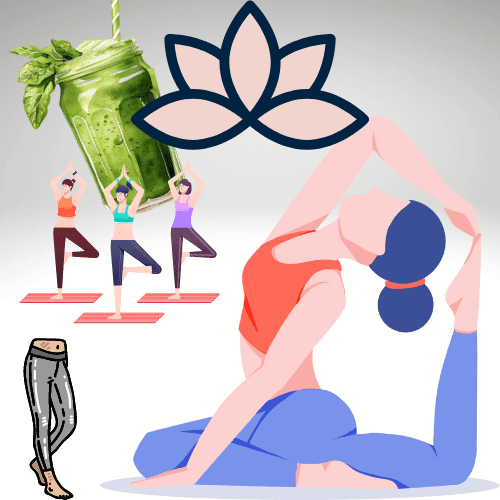

Yoga’s popularity is attached to American religious freedom and is a key part of American identity, even if there is plenty of discrimination to go around. The founders of American literature (Emmerson, Thoreau, and Whitman) and other thinkers were well-versed in Vedic texts and incorporated a Vedic worldview into American self-consciousness. These Transcendental concepts emphasized finding higher consciousness in nature and that “god is in the universe” rather than a god in church.
These ideas were planted in the American subconscious until it exploded in the 1960s counter-culture revolution. Coping with new existential threats like nuclear war, Boomers no longer felt the church was providing the answers they sought. Initially, Boomers turned to LSD but as the decade wore on, the dark side of heavy drug use drove many to seek “a high without drugs”. When the Beatles returned from India with the song “Dear Prudence”, Indian philosophy and everything related to it became mainstream pop culture.
Through the 70s, 80s, and 90s gurus found an eager American audience, founding many more ashrams, and yoga studios, and importing Indian-based concepts tailored for an American experience. The demand to produce more yoga teachers produced “Vinyasa Yoga”. This is a type of yoga that is relatively easy to memorize and reproduce for the masses. From there, yoga evolved into a fitness culture and into how we mostly experience it today.
What does all this mean?
There are two more key principals that make yoga so appealing to Americans. One is that, unlike faith-based religions, yoga is willing to be scientifically or objectively proven. It has a focus on real results in the real world. One short Google search will provide piles of studies that quantify that yoga and meditation have health benefits. Vedic thought is grounded in tangible reality, such as Whitman’s Leaves of Grass. This is ideal for a “spiritual not religious” culture. American yoga connects spiritual growth with the physical. It’s become a two-pronged system where yoga is for physical health and meditation for mental health.
Secondly, Vedic philosophy isn’t in conflict with capitalism. While yoga may appear anti-capitalistic, achieving earthly success is not at odds with spiritual success. Meditation is free, but there’s no issue with Oprah commercializing it. In this framework, success is a success. Five minutes of meditation a day is a lot more convenient and directly conducive to productivity than a religion. In an American Yoga, we built a ginormous industry off the backs of the hippies who wanted to open the doors of perception and “f*ck the man”.
Under the surface, the yoga industry is a results-driven multi-billion industry that has marketed and shaped our entire view of the world. Yoga has permeated the culture to the point that it’s not always clear to see where even for those who have never tried yoga, it goes far beyond paying for a yoga class. Words like “natural” carry heavy marketing value because of an American subconscious that identifies the word “nature” with true, real, authentic, enlightened, and higher value.
It’s not random that yoga pants (which are usually made with polyester and nylon) replaced jeans in women’s apparel fifteen years ago, and Levi has yet to make a comeback in that market. The OG of yoga pants, Lululemon is also seeped in a cut-throat culture including sexual abuse, misogyny, blatant racism, shady business practices, and even murder that far surpass Bikram.
The popular Yogi Tea which dominates the shelves of most grocers was founded by another cult-like American guru who brought Kundalini Yoga to the States. Kundalini is an authentic and complex form of yoga, but it has been Americanized much like Vinyasa and Bikram by giving pupils a very specific set of poses to that generate “a high” when practiced due to restricting/releasing circulation and heavy percussion breaths usually with chanting mantras in ninety-minute sessions. Kundalini was the type of yoga that captured Carl Jung’s fascination, and Pilates borrowed several elements from it. I personally enjoy practicing Kundalini on occasion, and the high it produces is much like a “runners high” and encourages reflection, creative thought, and a refreshed mental clarity.
However, the Americanization of Kundalini is also pseudo-cultish with more sexual abuse cases and controversy. While few Americans have heard of Kundalini, many have purchased Yogi Tea.
None of this is to say yoga has had no positive benefits in Western culture. Most yoga studios aren’t cults and multitudes benefit from a weekly Vinyasa Flow or a Yogi Tea. Without passing judgment on whether yoga has influenced America for better or worse – we can have awareness of its presence.
American yoga culture is the cornerstone of today’s “wellness branding”. The idea of “wellness” can be a wolf in sheep’s clothing. In best efforts to use “wellness” as “self-care”, it’s pushing sales into a wide gambit of new products from dry brushes to skincare “rituals”, juice cleanses, to turmeric supplements. While yoga itself isn’t a problem, the new standards of physical and mental health we’ve used it to promote tend to often put the American consumer right back on the hamster wheel it appeared to be an escape from.


